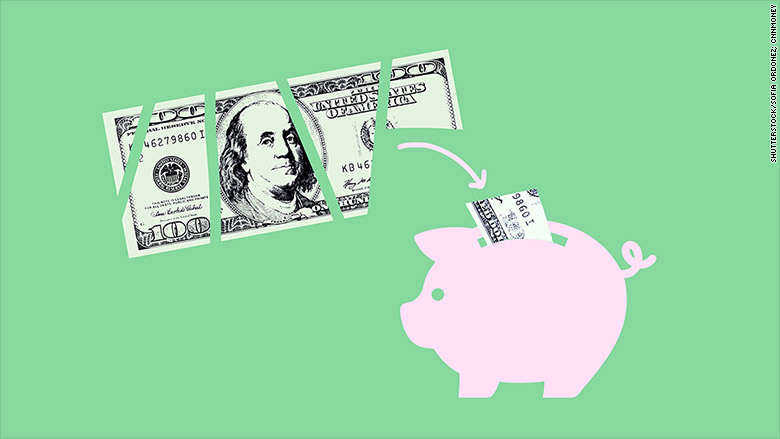
After completing a risk tolerance test I've decided I need to reduce my portfolio from 70% to 40% in stocks. But I'm worried if I do that now that I may be selling at a bad time. So should I just dollar-cost-average my way out of stocks until I get to where I need to be? -- N.C.
First, kudos for taking that risk tolerance test. Too many people wing it when it comes to deciding how to divvy up their savings between stocks and bonds. That's never a good idea, but it can be especially dangerous when investors have more money in stocks than they should when the market tanks. So I recommend other investors follow your lead, which they can do by creating a portfolio that jibes with your appetite for risk.
But once you've decided what stocks-bonds mix is appropriate for you, dollar-cost averaging isn't a very good method for getting from where you are to where you want be.
I know that may strange, since virtually everyone praises dollar-cost averaging and touts its benefits. But if you really examine the practice, you'll see that it's not a very effective way to deal with market volatility and manage investing risk.
Typically, the subject of dollar-cost averaging comes up when someone with a sizable sum of cash is considering whether to invest it in stocks all at once or do so gradually, say, over the course of a year. Advocates of dollar-cost averaging claim it's a good risk-reduction tool because tiptoeing in a bit at a time reduces the chance that you'll put all your money into stocks just before the market slumps.
But many analyses, including this one, counter that you stand a better chance of ending up with more money by investing in stocks all once, which makes sense since historically stocks have had more up years than down and they have usually outperformed cash during those up years.
Of course, there are times when stocks go down and dollar-cost averaging comes out ahead. But on balance you're more likely to be giving up investment gains by dollar-cost averaging than protecting your downsize.
But I don't think that this way of looking at dollar-cost averaging gets to the real issue—namely, whether it's an effective technique for managing risk. If you've put some thought into your investing strategy and created a well-balanced portfolio that includes both stocks and bonds, the question isn't how to get new money into stocks, or how to go from all cash to all stocks, but how best to put new money to work in the diversified portfolio of stocks and bonds you already have. (Or, in your case, this slight variation: how to move from the portfolio you have to the portfolio you want.) Either way, the issue isn't how to earn the highest return; it's how best to manage risk and reward.

Related: 1 in 4 people have almost nothing saved for retirement
So let's take your situation. You don't say how much you have invested, but for the sake of this example, let's assume you have $100,000 in savings, of which 70%, or $70,000, is invested stocks and 30%, or $30,000, is in bonds. You want to end up with a portfolio that is 40%, or $40,000, in stocks and 60%, or $60,000, in bonds. So essentially you need to move $30,000 from stocks into bonds.
You could dollar-cost average your way to your target portfolio mix, say, over 12 months. To do that you would take $2,500 out of your stock holdings each month and move it into bonds. (To keep things simple, I'm leaving investment returns out of the example.)
So after moving $2,500 out of stocks in the first month, you would be left with a portfolio with 67.5%, or $67,500, in stocks and 32.5%, or $32,500, in bonds. Your portfolio would be 62.5% ($62,500) stocks and 37.5% ($37,500) bonds by the third month; 55% ($55,000) stocks and 45% ($45,000) bonds by the sixth month and 47.5% ($47,500) stocks and 52.5% ($52,500) bonds by the ninth month. In the 12th month you would hit your 40% ($40,000) stocks-60% ($60,000) bonds target.
So you've arrive at your intended portfolio, but it's taken you a year to get there, a year during which you've gone through a series of stocks-bonds allocations that aren't in sync with your tolerance for risk.
If you really believe that a 40% stocks-60% bonds portfolio offers the right balance of risk vs. reward for you (as your risk tolerance test suggests), why should you spend a year at more aggressive allocations?
The answer is you shouldn't. You're better off going immediately to your 40% stocks-60% bonds portfolio, which is how you've decided your portfolio should be allocated. Granted, if it turns out that the stock market starts soaring as you're reducing your stock position, you'll end up with a lower return by moving quickly than you would have if you made the transition gradually. At the same time, though, you'll end up with a higher return going to bonds immediately rather than gradually if the market sinks.
Related: Should I move my $500,000 retirement stash into annuities?
But such "what ifs" are immaterial. The whole point of creating a stocks-bonds mix that matches your risk tolerance in the first place is because you don't know what the market is going to do. So rather than engage in a guessing game, you arrive at a blend of stocks and bonds that (aside from occasional rebalancing) you can stick with through good markets and bad, and that can deliver solid returns given the level of risk you're willing to take. Dollar-cost averaging undermines that strategy.
By the way, the same principle would apply if you were going from a more conservative to a more aggressive portfolio, say, 40% stocks-60% bonds to 70% stocks-30% bonds. In that case, dollar-cost averaging would also take you through a series of allocations that don't reflect your tolerance for risk, except that they would be more conservative than your target mix.
"But what about a 401(k)?," you may ask. People invest money gradually there. Doesn't that show how dollar-cost-averaging can work to your benefit? The answer is no. Investing money over time in a 401(k) isn't an example of dollar-cost averaging; it's an example of investing money as you get it, which does make sense.
If you wanted to apply dollar-cost averaging to your 401(k), you would have your plan administrator invest each contribution in a money-market account and you would then gradually move a piece of it each month from cash to your investment options. But clearly that would make no sense (and be unwieldy and time consuming to boot). Which is why if you contribute, say, $100 a month to a 401(k) that's split, say, 50-50 between stocks and bonds, you have your plan administrator immediately invest your monthly contribution match your investment mix. (Similarly, if you had the ability to make a full-year's contribution to your 401(k) at the beginning of the year, it would make more sense to invest it all at once in a way that reflects the asset mix you've set for your plan rather than put it all in cash and then invest in your various options a little bit at a time.)
Related: You could be making this 401(k) mistake
Bottom line: Whether you're adding new money to your portfolio or, as you're doing, switching to a new stocks-bonds mix because the old one doesn't suit you, you're better off investing the money or moving to your target portfolio mix as quickly as possible rather than dollar-cost averaging.
If you find it psychologically or emotionally difficult to do that, then make the move gradually but over a short period, say, a few months instead of a year. Because the longer you string it out, the longer you'll be taking more (or less) risk than you've decided you should take.
More from RealDealRetirement.com
3 Ways To Avoid Running Through Your Nest Egg Too Soon

